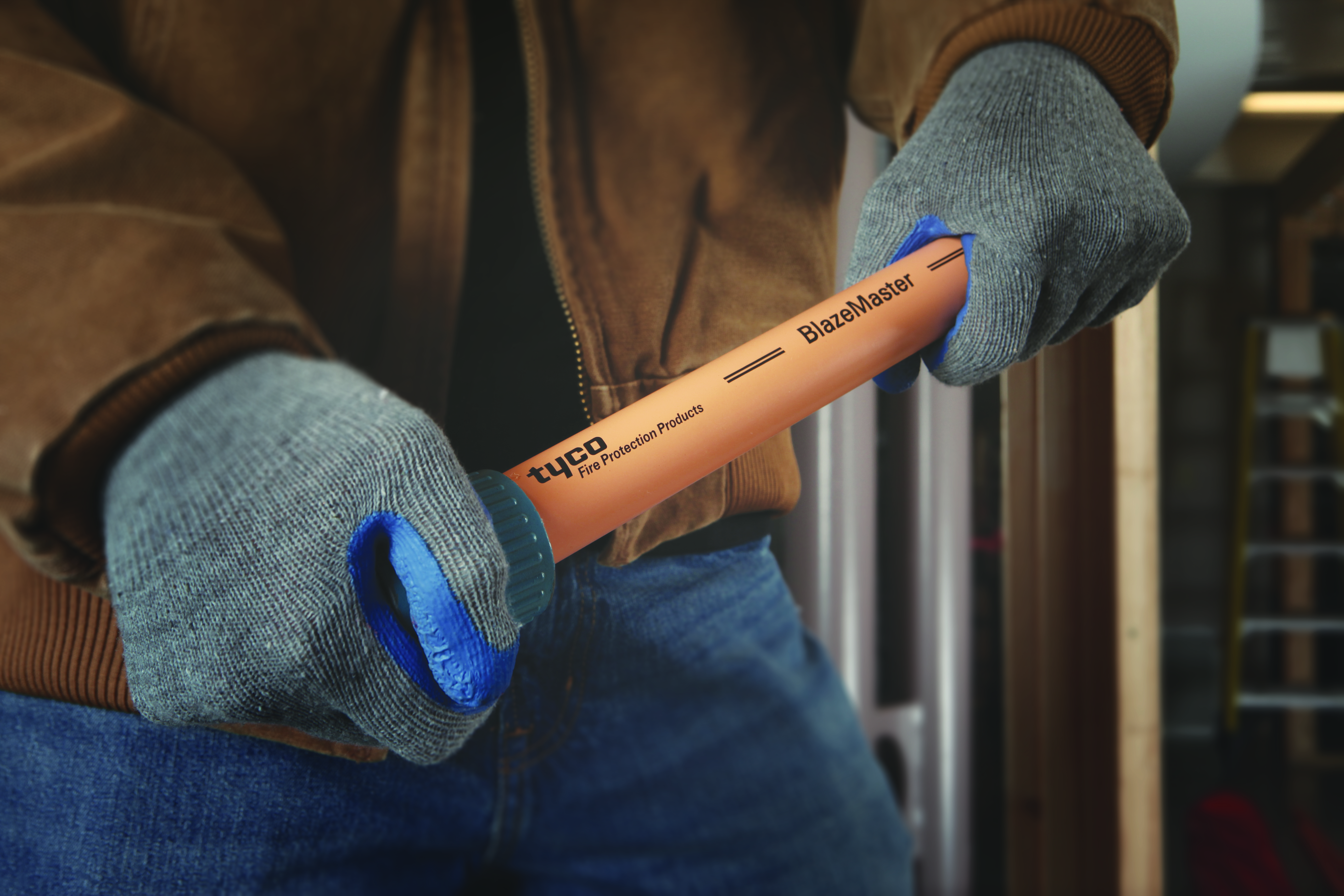10 Installation Tips for Embedding BlazeMaster® CPVC in Concrete
Concrete construction is a popular technique for ceilings and walls in a wide range of applications, such as schools, office buildings, apartments, warehouses, factories, and residential homes. Embedding a CPVC fire sprinkler system in the concrete surfaces offers a variety of advantages over steel pipe – and BlazeMaster® Fire Protection Systems offers the industry’s only UL® listing for this purpose.
The practice of embedding BlazeMaster CPVC in concrete has a proven track record over many years. Direct contact with concrete has no adverse chemical effect on BlazeMaster CPVC, and there has never been a reported case of incompatibility of chemicals mixed with concrete over years of contact. BlazeMaster CPVC can be installed in direct contact with precast or site-poured concrete walls or decks.
Benefits of Embedding in Concrete
Embedding BlazeMaster CPVC in concrete ceilings and walls offers a variety of advantages over conventional steel pipe, including:
- Improved aesthetics. Embedding CPVC within a concrete ceiling hides the fire sprinklers. Without embedding, the pipe will be exposed against the ceiling surface, typically requiring a drop ceiling.
- Reduced installation and maintenance costs. Embedded systems eliminate the cost of installing drop ceilings as well as the fire sprinkler system hangers required with steel pipe. BlazeMaster CPVC naturally resists the corrosion and scaling inherent with steel pipe so there is a lower chance repairs will be needed.
- Enhanced design flexibility. BlazeMaster CPVC fire sprinkler systems are welded with solvent cement, which enables them to be installed directly into concrete ceilings. By contrast, steel systems use threaded pipe and screw fittings and require split-ring ceiling hangers, which limit the finished ceiling height.
BlazeMaster CPVC also offers more advantages over steel pipe, including lower initial cost; simpler, less expensive, and less disruptive installation; and improved hydraulics.
Installing BlazeMaster CPVC in Concrete
Always refer to the manufacturer’s installation guide for specific listings, approvals, and limitations. Here are 10 field-proven tips:
- Prevent abrasion caused by rubbing the pipe against the wire mesh or reinforcing bars used in concrete. Keep in mind that BlazeMaster CPVC should not be installed in concrete that will be post-tensioned, as this process can create excessive forces that damage the fire sprinkler system.
- Ensure BlazeMaster CPVC does not come into contact with sharp edges or objects, such as rocks or structural members. Protect pipe ends so debris or concrete do not get into the system.
- Use straight runs as much as possible to reduce stress on the pipe. However, BlazeMaster CPVC is inherently ductile and can be snaked as needed to avoid obstacles.
- Avoid contact with construction materials that are chemically incompatible. When using chemical additives, verify the product is compatible with the manufacturer. As mentioned above, there have been no reported issues when embedding BlazeMaster CPVC in concrete.
- Prevent movement of the pipe when the concrete is poured. Secure the pipe intermittently, ideally with nonabrasive plastic fasteners. If hangers are needed, use metal hangers designed for the metal pipes. Be careful not to use undersized hangers and ensure there are no compressive loads or rough or sharp edges that come in contact with the pipe.
- Plan for expansion and contraction in sections of pipe not embedded in concrete. Thermal expansion and contraction do not affect pipe and fittings embedded in concrete but ensure the design accommodates these stresses at points where pipe enters and exits the concrete.
- Do not encase the sprinkler head adapter in concrete. This will allow for easier access to the sprinkler head adapter to streamline future modifications. Use protective coverings to prevent the concrete from surrounding the sprinkler head.
- Pressure test pipe joints that will be covered in concrete prior to pouring the material. If there are no joints that will be covered, there is no need to pressure test prior to the pour.
- Keep pressure in the system until the pour is finished. In winter conditions, ensure a compatible antifreeze is used.
- Ensure the pipe is not damaged by tools and equipment used in the pouring and finishing process. For instance, BlazeMaster CPVC is compatible with compaction vibrators. However, BlazeMaster should not come into contact with equipment such as tampers and agitators.
Get more installation tips by downloading our Installation Guidelines white paper and our Embedded in Concrete brochure. Do you have questions about an upcoming project? Technical support is just a click away.


